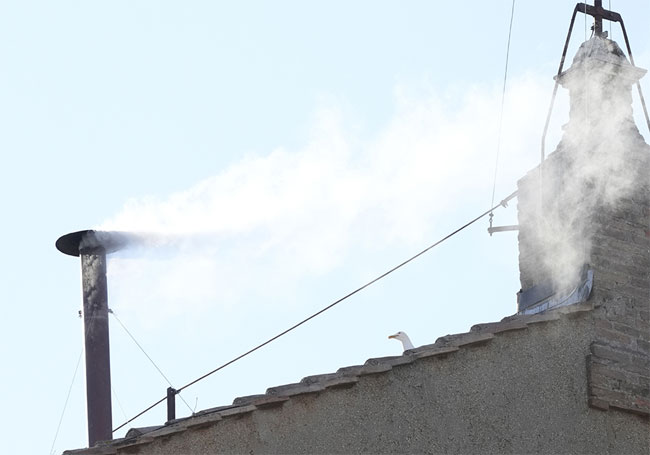New pope elected as white smoke emanates from Sistine Chapel
May 8, 2025 09:55 pm
White smoke billowed from the chimney atop the Vatican’s Sistine Chapel on Thursday, signalling that the 133 cardinals inside have elected a new pope.
They picked a successor to Pope Francis on the second day of voting, but the world’s 1.4 billion Catholics will have to wait for the official announcement from the balcony of St Peter’s Basilica to learn who he is.
Cardinals prepared to cast fresh votes Thursday for the next head of the Catholic Church, after sending up a second round of black smoke to signal they had again failed to elect a pope.
The 133 cardinals began their secretive conclave in the 15th-century Sistine Chapel on Wednesday afternoon, seeking a successor to Pope Francis as head of the world’s 1.4 billion Catholics.
The centuries-old ritual is held entirely behind closed doors, but the red-robed cardinals were scheduled to have two votes on Thursday afternoon after lunch at the Santa Marta guesthouse, where they are staying.
Sworn to secrecy, their only method of communication is by burning their ballot papers to send up smoke through the chapel chimney, coloured black if they have no decision, white for a new pope.
Among the thousands of Catholics and curious tourists gathered in St Peter’s Square to watch the proceedings.
Take your time
On Wednesday, the first day of the conclave, the black smoke came some three hours and 15 minutes after the cardinals closed the doors of the Sistine Chapel.
If no pope emerges in the two votes to come Thursday afternoon, the voting will continue Friday, and for as long as it takes to find consensus.
In 2005, Pope Benedict XVI was elected in four ballots over two days and Pope Francis in 2013 in five ballots over two days.
“I don’t want it rushed, whatever they need to do to make the right decision,” said Barbara Mason, 50, who travelled from Canada for the conclave.
A central question is whether cardinals will choose someone in the image of Francis, who defended the poor, migrants and marginalised around the globe, or someone more focused on defending Church doctrine.
The charismatic Argentine reformer died on 21 April, aged 88.
No secrets revealed
While voting within the Sistine Chapel, the cardinal electors, all those aged under 80, are seated at tables set up beneath Michelangelo’s frescoed ceilings.
Each man writes their choice for pope on a ballot paper and takes it to the altar, which is placed in a silver urn.
After the ballots had been counted, they were burned in a cast-iron stove dating back to 1939. Chemicals are added to a second, newer stove, connected to the same flue, which colours the smoke.
While their procession into the Sistine Chapel on Wednesday was broadcast live by the Vatican, including on screens in St Peter’s Square, the feed cut as soon as they locked the doors.
The cardinals, who had to leave their phones behind, took an oath Wednesday not to reveal the secrets of the conclave, which was about the pain of excommunication.
Divisions
The 2025 conclave is the largest and the most international ever, assembling cardinals from around 70 countries.
There is no clear frontrunner to succeed Francis. The cardinals represent a range of progressive and conservative traditions within the Church.
The challenges facing the 2,000-year-old institution are clear, however.
The new pope will need to tread carefully amid geopolitical uncertainty, while addressing deep fractures within the Church, many of them exacerbated by Francis’s reforms.
There is also the continuing fallout from the global clerical sex abuse scandal and, in the West, increasingly empty pews.
Around 80 percent of the cardinals voting were appointed by Francis.
More than a dozen names are circulating, from Italian Pierbattista Pizzaballa and Hungarian Peter Erdo to the Philippines’ Luis Antonio Tagle and Sri Lanka’s Cardinal Malcolm Ranjith.
--Agencies












